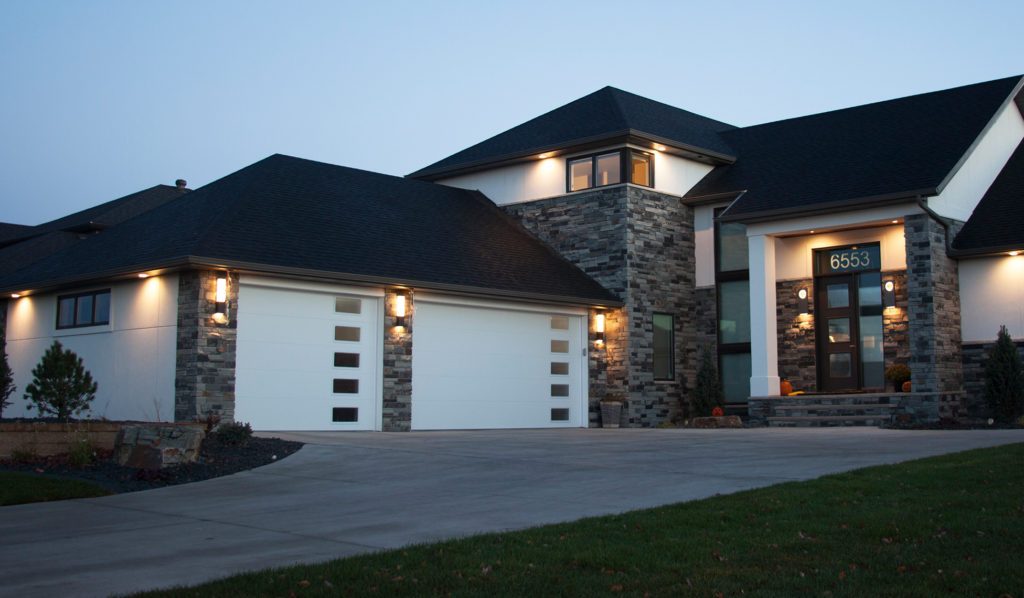Looking to tackle DIY garage insulation but not sure where to start? For beginners, mastering the basics is key. Discover simple yet effective techniques to keep your space cozy in winter and cool in summer. From sealing gaps to adding insulation, we’ll guide you through the process step by step. Say goodbye to energy waste by using effective insulation and hello to a more comfortable workspace. Learn how to enhance your garage’s energy efficiency without breaking the bank. Get ready to transform your garage into a functional and insulated haven with these beginner-friendly tips.
Key Takeaways
- Insulating your garage can help regulate temperature, reduce energy costs, and create a more comfortable workspace.
- Before starting the insulation process, ensure proper preparation by cleaning the area, sealing any gaps, and wearing appropriate safety gear.
- Different types of insulation such as fiberglass, foam board, and reflective barriers offer varying levels of effectiveness and installation ease.
- Understanding the R-value of insulation is crucial as it indicates the material’s thermal resistance and its ability to insulate.
- Focus on insulating garage walls, ceiling, and door to create a well-insulated space that prevents heat loss or gain.
- Consider additional projects like insulating pipes, ducts, or floors to further enhance energy efficiency and comfort in your garage.
Why Insulate Your Garage
Benefits of Insulation
Insulating your garage enhances energy efficiency, reducing heating and cooling costs significantly. This helps in maintaining a comfortable temperature inside the garage, especially during extreme weather conditions. By insulating your garage, you can contribute to a quieter home environment by minimizing outside noise infiltration.
Insulation also plays a crucial role in reducing noise transmission from the garage into your living spaces. It creates a barrier that absorbs sound waves, making your home more peaceful and serene. Insulated garages can help in maintaining warmer temperatures during winter months, preventing freezing of stored items and vehicles.
Cost Considerations
When considering garage insulation, it’s essential to evaluate the initial investment required for different types of insulation materials. While some options may have higher upfront costs, they offer better long-term benefits in terms of energy savings and comfort. Take into account the potential financial advantages of insulating your garage, such as reduced utility bills and increased property value.
Exploring various insulation materials allows you to make an informed decision based on cost-effectiveness and performance. Despite the initial expenses, the long-term cost savings associated with garage insulation outweigh the upfront investment. Evaluate the return on investment in terms of energy efficiency and improved comfort levels within your home.
Getting Ready for Insulation
Preparing Your Garage
Assess the current state of your garage to identify any existing issues that may affect the insulation process. Look for gaps, cracks, or moisture problems that need to be addressed before insulating. Plan for any necessary repairs or modifications to create a suitable environment for insulation. Ensure that the garage is clean and free of debris to facilitate the installation process.
Proper ventilation is crucial to prevent moisture buildup within the insulated space. Check if your garage has adequate ventilation or if additional measures need to be taken. Safety should always be a top priority, so make sure to have proper safety equipment such as gloves, goggles, and masks when working on insulation projects.
Tools and Materials
Identify the essential tools required for garage insulation, including a utility knife, tape measure, staple gun, and protective gear. These tools will help you cut and install insulation materials effectively. Understand the different types of insulation materials available, such as fiberglass, foam board, and reflective insulation. Each material has its pros and cons, so choose one that best suits your needs.
Create a checklist of materials needed for the insulation project, including insulation batts or rolls, vapor barrier, sealing tape, and fasteners. Having a comprehensive list will ensure that you have everything you need before starting the project. Consider the climate in your area when selecting insulation materials to achieve optimal energy efficiency.
Types of Insulation Explained
Fiberglass
Fiberglass insulation is made of tiny glass fibers and is a common choice for insulating garages. It offers good thermal resistance and is easy to install. When working with fiberglass, wear protective gear to prevent skin irritation.
Rigid Foam
Rigid foam insulation is ideal for garage walls and ceilings due to its high R-value. Cutting rigid foam accurately is crucial for a snug fit during installation. Its versatility makes it suitable for various garage spaces.
Spray Foam
Spray foam insulation provides an efficient barrier against heat transfer in garages. Professional installation ensures proper coverage and sealing of gaps. The airtight seal created by spray foam helps in maintaining consistent temperatures.
Cellulose
Cellulose insulation consists of recycled paper products and has excellent thermal performance. The loose-fill installation method allows for easy application in hard-to-reach areas. Cellulose insulation is suitable for different types of garage structures.
Reflective
Reflective insulation materials have a shiny surface that reflects heat away from the garage. They help in regulating temperature by reducing heat absorption. Installing reflective insulation involves stapling it to the walls or ceiling securely.
Understanding R-Value
Importance of R-Value
Insulation materials are essential for maintaining a comfortable temperature in your garage. The R-value indicates the material’s ability to resist heat flow, with higher values signifying better insulation.
Garage insulation with a high R-value helps in reducing energy costs by minimizing heat transfer through walls and ceilings. Proper insulation ensures that your garage stays warm in winter and cool in summer.
Choosing the Right R-Value
When selecting insulation for your garage, consider factors like climate conditions and the intended use of the space. A higher R-value is recommended for colder climates, while a lower value suffices for milder regions.
To determine the suitable R-value for your garage, consult local building codes or seek advice from professionals. Opting for the right R-value ensures optimal thermal performance and energy efficiency.
Impact on Energy Efficiency
The R-value directly impacts the energy efficiency of your garage. Insulation with a high R-value helps in maintaining consistent temperatures, reducing the workload on heating and cooling systems.
Insulating Garage Walls
Clearing Walls
Prepare your garage walls by clearing obstacles and debris for a smooth insulation installation. Conduct a thorough inspection to ensure no issues.
Identify and seal any gaps in the garage walls using suitable materials and techniques. Effective gap-filling prevents heat loss and maximizes insulation efficiency.
Filling Gaps
Before installing insulation, focus on sealing any gaps in the garage walls. This step is crucial for maintaining a consistent temperature inside.
Learn about various gap-filling materials and techniques to address different types of gaps effectively. A well-sealed wall ensures optimal insulation performance.
Installing Insulation
For successful insulation, meticulously follow the installation instructions. Proper coverage and alignment are essential for maximum garage insulation efficiency.
During the diy garage insulation project, seek assistance if needed to ensure the insulation is correctly installed. Precision is key to achieving total garage insulation.
Adding Drywall
After insulating, adding drywall further enhances the effectiveness of the insulation. Combining these elements improves energy efficiency and temperature control.
Understand the benefits of integrating drywall with insulation to achieve a well-insulated space. Properly installing drywall complements the finished garage walls.
Insulating the Ceiling
Types of Insulation
Insulating the ceiling of your garage is crucial for maintaining a comfortable temperature. Garage ceilings are often overlooked but play a significant role in energy efficiency. Various insulation materials can be used, such as fiberglass, foam board, or spray foam.
Fiberglass insulation is a popular choice due to its affordability and effectiveness in reducing heat transfer. Foam board insulation provides high thermal resistance and is easy to install. Spray foam insulation offers excellent coverage and seals gaps effectively.
Installation Techniques
When insulating your garage ceiling, ensure proper ventilation to prevent moisture buildup. Start by measuring the area accurately to determine the amount of insulation needed. Install insulation between the joists, ensuring a snug fit to minimize air leakage.
Consider using a vapor barrier to prevent condensation and mold growth. Secure the insulation properly to avoid sagging or gaps that can reduce its effectiveness. Seal any openings or cracks before installing the insulation to create airtight coverage.
Benefits of Ceiling Insulation
Properly insulating your attics can lead to significant energy savings by reducing heating and cooling costs. Insulated garage ceilings help maintain a consistent temperature inside the space, making it more comfortable for various activities.
By insulating the ceiling, you can also reduce noise transmission from outside sources, creating a quieter environment. Insulation improves the overall energy efficiency of your garage, contributing to a more sustainable living space.
Maintenance Tips
Regularly inspect your garage ceiling insulation for signs of damage or wear. Address any issues promptly to ensure optimal performance and energy savings. Consider upgrading your insulation if you notice a decrease in efficiency or increased energy bills.
To enhance the longevity of your insulation, keep the attics well-ventilated and free from moisture buildup. Proper maintenance ensures that your ceiling insulation continues to provide maximum benefits for years to come.
Insulating the Garage Door
Benefits of Garage Door Insulation
Insulating your garage door offers several advantages. Firstly, it helps in maintaining a consistent temperature inside the garage, making it more comfortable to work in during extreme weather conditions. Insulated garage doors can reduce energy costs by minimizing heat loss in winter and heat gain in summer.
Types of Garage Door Insulation
When considering garage door insulation, there are various options available to choose from. One popular choice is using garage door insulation kits, which are easy to install and provide effective thermal resistance. Another option is insulating with vinyl, known for its durability and ability to withstand harsh weather conditions.
Installation Techniques for Garage Door Insulation
For beginners looking to insulate their garage doors, it’s essential to follow a few simple steps. Start by measuring the dimensions of your garage door panel to ensure you purchase the correct amount of insulation material. Next, clean the surface of the garage door thoroughly before applying the insulation.
Maintenance Tips for Insulated Garage Doors
To ensure your insulated garage door remains in top condition, regular maintenance is crucial. Check for any signs of wear and tear on the insulation material and promptly replace any damaged sections. Lubricate the moving parts of the garage door to prevent friction and ensure smooth operation.
Additional Projects for Enhanced Efficiency
Sealing Gaps
When insulating your garage, sealing gaps is crucial to prevent heat loss and maintain a consistent temperature. Use weatherstripping around windows and doors to keep cold air out.
Installing Radiant Barrier
Consider installing a radiant barrier in your garage to reflect heat away during hot summer months and retain warmth in the winter. This reflective material can significantly improve thermal performance.
Adding Insulation to Walls
Enhance your garage’s insulation by adding insulation to walls. This extra layer helps regulate temperatures efficiently, keeping the space warm in winter and cool in summer.
Upgrading Garage Ceiling Insulation
Upgrading garage ceiling insulation is another effective way to optimize energy efficiency. Insulating the ceiling prevents heat from escaping through the roof, maintaining a comfortable environment.
Ventilating the Space
Proper ventilation is essential for a well-insulated garage. Ventilating the space ensures good air circulation, preventing moisture buildup that can compromise insulation effectiveness.
Closing Thoughts
Now that you understand the importance of insulating your garage and have learned about different insulation types, R-values, and specific insulation techniques for walls, ceiling, and doors, you’re equipped to enhance your garage’s energy efficiency. By implementing these DIY insulation methods, you can create a more comfortable space while reducing energy costs.
Take the next step and start insulating your garage using the knowledge you’ve gained. Don’t underestimate the impact proper insulation can have on your home’s overall energy efficiency and comfort. Your efforts will not only benefit you now but also in the long run by saving you money on heating and cooling bills. Get started today and transform your garage into a well-insulated space!
Frequently Asked Questions
What are the benefits of insulating my garage?
Insulating your garage helps regulate temperature, reduces energy costs, and provides a more comfortable workspace. It also prevents moisture buildup and protects your belongings from extreme temperatures.
How can I prepare my garage for insulation?
Before insulating, ensure the space is clean and free of clutter. Seal any gaps or cracks to prevent air leaks. Consider installing a vapor barrier to protect against moisture.
Which type of insulation is best for a garage?
The best insulation type for a garage depends on factors like budget and climate. Common options include fiberglass, foam board, and reflective insulation. Consult with a professional to determine the most suitable choice.
What is R-Value and why is it important in garage insulation?
R-Value measures insulation’s thermal resistance. A higher R-Value indicates better insulation performance. Understanding R-Value ensures you choose the right insulation thickness for efficient temperature regulation in your garage.
Can I insulate my garage door myself?
Yes, you can insulate your garage door as a DIY project. Use insulation kits designed for garage doors and follow the manufacturer’s instructions carefully. Insulating the door helps maintain consistent temperatures inside the garage.






